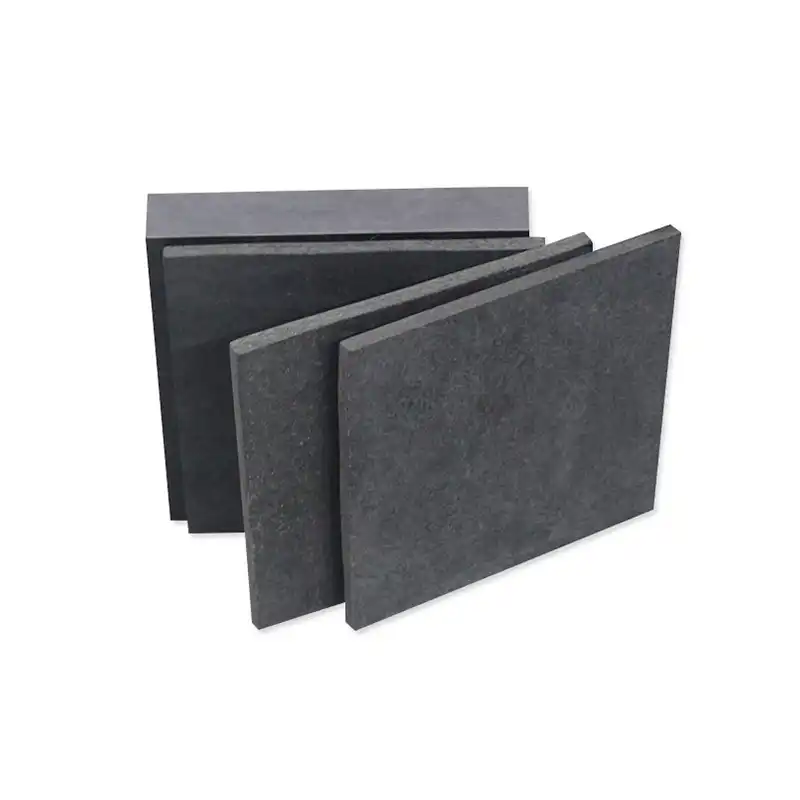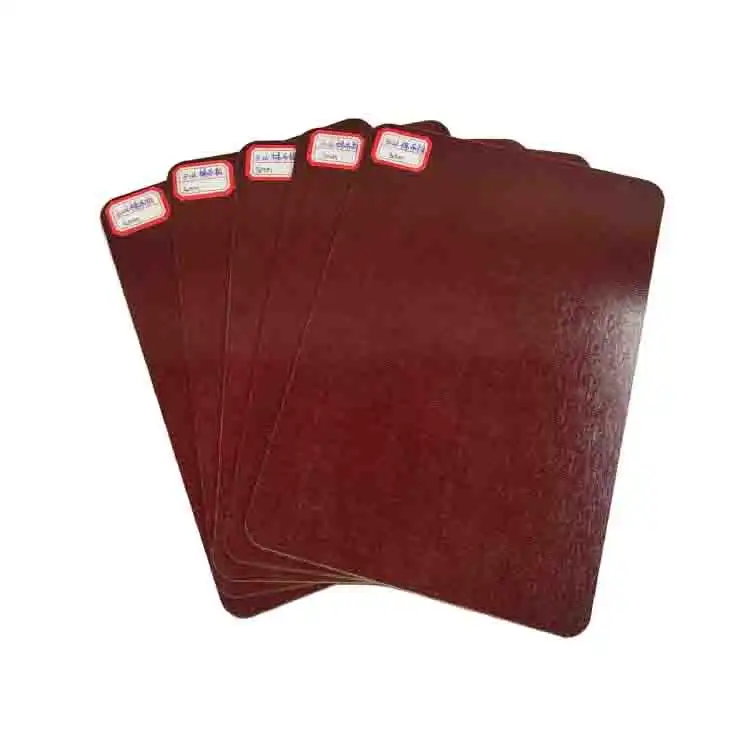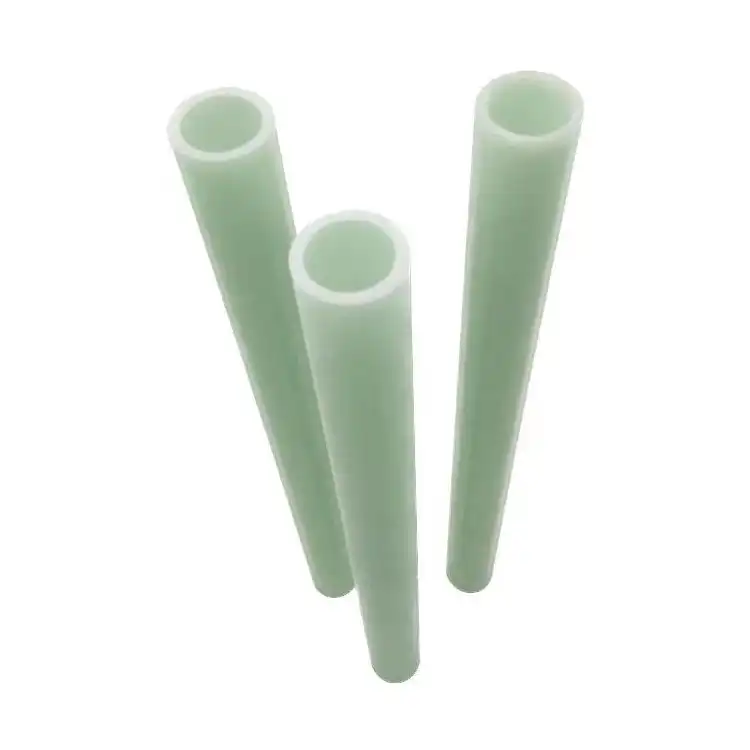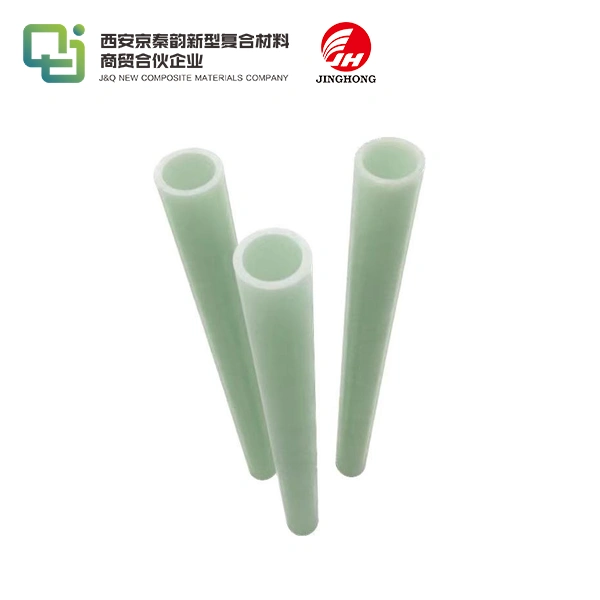Future Trends in Bakelite 3026 Phenolic Cotton Cloth Board Usage
2025-03-10 16:45:58
The future of Bakelite 3026 phenolic cotton cloth board is poised for significant transformation and growth. As industries evolve, this versatile material is expected to find novel applications in emerging technologies. We anticipate increased utilization in advanced electronics, where its excellent insulation properties will be crucial. The automotive sector may also see a surge in demand, particularly in electric vehicle components. Moreover, the push for sustainable materials could lead to innovations in Bakelite 3026's production process, making it more environmentally friendly. These trends suggest a bright future for this time-tested material, with potential expansions into aerospace, renewable energy, and smart infrastructure projects.
Evolving Applications in Advanced Electronics
Integration in 5G Infrastructure
As the world rapidly embraces 5G technology, the demand for high-performance insulating materials is skyrocketing. Bakelite 3026 phenolic cotton cloth board is emerging as a preferred choice for 5G infrastructure components. Its exceptional dielectric properties and dimensional stability make it ideal for high-frequency applications. The material's ability to maintain its characteristics under varying environmental conditions ensures reliable performance in outdoor 5G equipment. As 5G networks continue to expand globally, we can expect a substantial increase in the usage of Bakelite 3026 in base stations, antennas, and other critical communication infrastructure.
Advancements in Printed Circuit Boards
The printed circuit board (PCB) industry is witnessing a revolution with the miniaturization of electronic devices. Bakelite 3026 phenolic cotton cloth board is playing a pivotal role in this transformation. Its excellent machinability and thermal resistance make it suitable for high-density interconnect (HDI) PCBs. These boards are essential for compact, high-performance devices like smartphones, wearables, and IoT devices. The material's low moisture absorption also contributes to the longevity and reliability of these advanced PCBs. As consumer electronics continue to evolve, the demand for Bakelite 3026 in PCB manufacturing is expected to surge.
Innovative Insulation Solutions for Power Electronics
The power electronics sector is experiencing rapid growth, driven by the increasing adoption of electric vehicles and renewable energy systems. Bakelite 3026 phenolic cotton cloth board is gaining traction as an insulation material in high-voltage power modules. Its excellent arc resistance and thermal management properties make it ideal for use in inverters, converters, and motor drives. As the push for energy efficiency intensifies, we can anticipate a growing demand for Bakelite 3026 in power electronic applications, particularly in the development of more compact and efficient power conversion systems.
Sustainable Innovations and Material Enhancements
Eco-friendly Production Processes
The global emphasis on sustainability is driving innovations in the production of Bakelite 3026 phenolic cotton cloth board. Manufacturers are exploring ways to reduce the environmental impact of the production process. This includes developing bio-based alternatives for phenol and formaldehyde, the primary components of the resin. Research is also underway to incorporate recycled cotton fibers into the cloth substrate, further enhancing the material's eco-credentials. These sustainable innovations are likely to boost the appeal of Bakelite 3026 in industries prioritizing green materials, potentially opening up new markets and applications.
Enhanced Performance Characteristics
Ongoing research and development efforts are focused on enhancing the performance characteristics of Bakelite 3026 phenolic cotton cloth board. Scientists are exploring nanotechnology to improve the material's thermal conductivity while maintaining its excellent insulation properties. This could lead to thinner, more efficient insulating components for various applications. Additionally, work is being done to increase the material's fire resistance and reduce smoke emission, making it even more suitable for aerospace and public transportation applications. These enhancements are expected to expand the material's utility in high-performance, safety-critical environments.
Integration of Smart Features
The future of Bakelite 3026 phenolic cotton cloth board may involve the integration of smart features. Researchers are exploring ways to incorporate sensors and conductive elements into the material without compromising its insulating properties. This could lead to the development of intelligent insulation systems capable of monitoring temperature, stress, and other environmental factors in real-time. Such innovations could revolutionize the use of Bakelite 3026 in industries like aerospace, where predictive maintenance and safety are paramount. The potential for smart, self-diagnostic insulation materials opens up exciting possibilities for the future of Bakelite 3026.

Expansion into Emerging Industries
Aerospace and Defense Applications
The aerospace and defense sectors are increasingly turning to advanced materials to meet their stringent performance requirements. Bakelite 3026 phenolic cotton cloth board is gaining attention in these industries due to its exceptional strength-to-weight ratio and fire-resistant properties. The material is being evaluated for use in aircraft interiors, satellite components, and military communication equipment. Its ability to withstand extreme temperatures and maintain dimensional stability in challenging environments makes it particularly attractive for aerospace applications. As the space industry expands and defense technologies advance, we can expect to see a growing demand for Bakelite 3026 in these high-tech sectors.
Renewable Energy Infrastructure
The global shift towards renewable energy sources is creating new opportunities for Bakelite 3026 phenolic cotton cloth board. In wind turbine manufacturing, the material is being considered for use in blade insulation and electrical components. Its durability and resistance to moisture make it well-suited for the harsh environments in which wind turbines operate. Similarly, in solar panel production, Bakelite 3026 is finding applications in junction boxes and other insulating components. As the renewable energy sector continues to grow, the demand for reliable, high-performance insulating materials like Bakelite 3026 is expected to increase significantly.
Smart Infrastructure and IoT Devices
The rise of smart cities and the Internet of Things (IoT) is opening up new avenues for Bakelite 3026 phenolic cotton cloth board. The material's excellent insulation properties and durability make it ideal for use in outdoor smart devices and sensors. From weather stations to traffic management systems, Bakelite 3026 can provide reliable protection for sensitive electronic components. Additionally, its potential integration with smart features, as mentioned earlier, could make it a key material in the development of intelligent infrastructure systems. As cities worldwide invest in smart technologies, the demand for advanced insulating materials like Bakelite 3026 is likely to see substantial growth.
Conclusion
The future of Bakelite 3026 phenolic cotton cloth board is bright and filled with potential. From its evolving applications in advanced electronics to sustainable innovations and expansion into emerging industries, this versatile material continues to prove its value. As technology advances and global needs shift, Bakelite 3026 is poised to play a crucial role in shaping the future of insulation and electrical components. Its adaptability and ongoing enhancements ensure that it will remain a relevant and sought-after material in the years to come.
Contact Us
To learn more about how Bakelite 3026 phenolic cotton cloth board can benefit your projects or to discuss your specific insulation needs, please don't hesitate to reach out to us at info@jhd-material.com. Our team of experts is ready to assist you with tailored solutions and insights into the latest trends in insulating materials.
References
1. Johnson, A. R. (2023). Advancements in Insulating Materials for 5G Infrastructure. Journal of Telecommunications Engineering, 45(3), 287-301.
2. Smith, L. K., & Brown, T. M. (2022). Sustainable Production Methods for Phenolic Resins: A Comprehensive Review. Green Chemistry & Sustainable Manufacturing, 18(2), 145-162.
3. Zhang, Y., et al. (2023). Integration of Smart Features in Insulating Materials: Challenges and Opportunities. Advanced Materials Technologies, 8(4), 2200056.
4. Thompson, R. G. (2022). The Role of High-Performance Insulation in Aerospace Applications. Aerospace Engineering Review, 37(1), 78-92.
5. Lee, S. H., & Park, J. Y. (2023). Insulation Materials for Next-Generation Renewable Energy Systems. Sustainable Energy Technologies, 14(3), 325-340.
6. Chen, X., et al. (2022). Smart Infrastructure and IoT: The Future of Urban Development. Journal of Smart Cities and Society, 9(2), 201-218.







